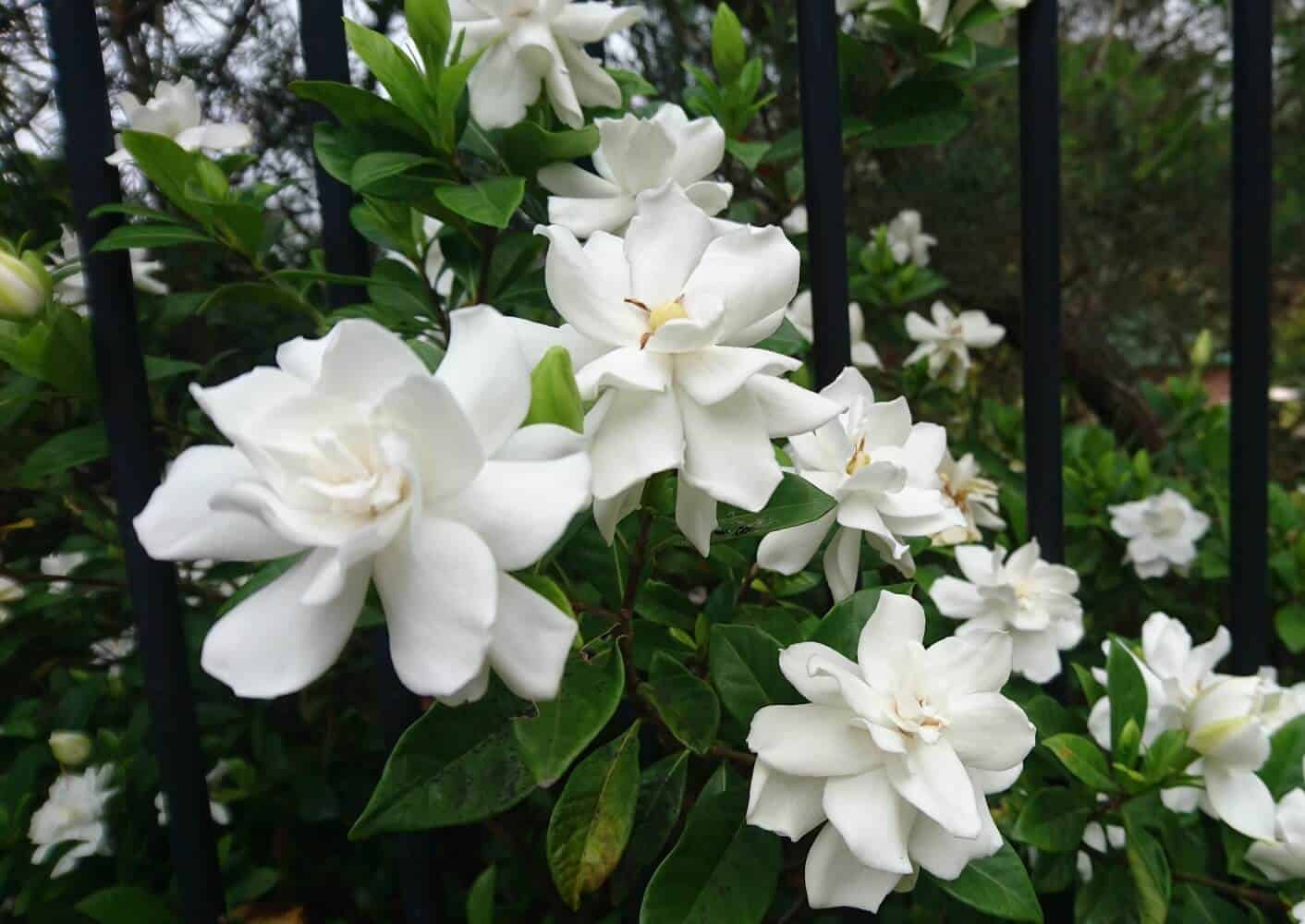Gardenias are prized for their lush evergreen foliage and incredibly fragrant white blooms But can these finicky shrubs tolerate shade? Getting the right amount of sunlight is key for abundant gardenia flowering
Gardenias Prefer Morning Sun
Gardenias grow best with morning sunlight and afternoon shade. Plants situated in this type of exposure produce the most flowers.
The early sun helps gardenias photosynthesize and make energy to support new growth. It also dries dew from the leaves, reducing disease risk.
As temperatures climb in the afternoon, filtered sunlight prevents leaf scorch. The shade also cools the blooms extending their lifespan.
Aim to give gardenias 4-6 hours of direct morning sunlight if possible. Afternoon shade, or even partial shade, is ideal.
If unable to provide this sun-shade combo, focus on ensuring the plants receive maximum morning sun.
Limited Bloom Results from Afternoon Shade
While gardenias grow acceptably with primarily afternoon shade, flower production will be reduced.
With sunlight only reaching the plants later in the day, they cannot carry out photosynthesis when conditions are optimal.
Less energy is produced for growing new shoots, leaves, and flower buds. Blooming will be diminished as a result.
However, the good news is that gardenias still survive and bloom modestly in afternoon shade. A compromise is shifting pots seasonally to maximize sunlight exposure.
Growth Habit Changes in Heavy Shade
When gardenias lack sufficient sunlight from any direction, growth habit alters drastically.
Elongated, leggy stems reach up seeking light. Foliage becomes more sparse and pale.
Flower buds may form but fail to open fully, remaining small and not developing fragrance.
While gardenias persist in heavily shaded sites, their beauty is greatly reduced without adequate sunlight for photosynthesis.
Shade Affects Flowering
The impact of shade on gardenia blooms depends on the severity:
-
Morning shade only – Blooms well but flowers later
-
Afternoon shade only – Good flowering with slightly smaller blooms
-
Partial shade – Modest flowering; paler and fewer blooms
-
Full shade – Dramatically reduced flowering; small, sparse blooms
Even well-established gardenia shrubs bloom progressively less when a site becomes shadier over time. Insufficient sun takes a toll.
Causes of Reduced Sun Exposure
There are a few common reasons a gardenia’s sunlight becomes blocked:
- New structures or landscaping
- Maturing nearby trees
- Increased canopy density over time
- Seasonal factors like storm damage or pruned branches
Routine pruning of encroaching branches is key to retaining sunlight exposure for gardenias.
If an overly shady spot cannot be improved, consider relocating gardenia containers to the sunniest areas.
Supplemental Lighting Helps
Where options for increasing sunlight are limited, providing supplemental lighting is beneficial:
-
Morning light extends hours of sun exposure.
-
Daylight spectrum bulbs mimic outdoor conditions.
-
Adjustable lights can target specific branches.
-
Lights prevent bloom drop in winter when days are short.
While not a complete substitute for natural sunlight, artificial lighting is better than deep shade. It can make the difference inmarginal situations.
Other Shade-Loving Flowering Shrubs
If efforts to supply adequate light for gardenias are unsuccessful, replace them with shade-tolerant flowering shrubs like:
- Camellias
- Azaleas
- Hydrangeas
- Rhododendrons
- Impatiens
- Hostas
With proper morning sunlight, gardenias thrive. But when shade encroaches, it takes adapting or substituting to keep the garden glowing.
The Takeaway
Gardenias grow acceptably in light to moderate afternoon shade, but bloom best with ample morning sun. Deep shade dramatically reduces flowering and alters the plant’s form. While supplemental lighting can help in marginal situations, the most flowers will come from gardenias sited in sunny spots. When shade becomes excessive, it’s best to switch to plants naturally suited for low light. With a little sunlight management, gardenia’s fragrant blooms can continue perfuming the garden.
Do Gardenias Like Sun or Shade?
FAQ
How much shade can gardenias tolerate?
Where should you not plant gardenias?
How many hours of sun does a gardenia need?
Do gardenias do better in pots or in the ground?
Do gardenias grow in shade?
Gardenias will grow in partial shade especially in the afternoon but may not do well in full shade. If they are grown in full shade, they may not produce as many flowers or fruit as those that are grown in less shaded areas. Also Read: Peony: Shade or Sun? | How Much Sun Do Peonies Need To Grow?
Do gardenias need a lot of Sun?
It’s always easier to avoid plant problems than to fix them, and location is the key to success. Gardenias perform best when they receive intense morning light and shade from the hot afternoon sun. Sun exposure is necessary for proper flower bud development – with too little sun plants will produce leggy growth and few flowers.
Can you plant gardenias outside?
Use an ericaceous (lime-free) potting compost for house plants or pot-grown outdoor gardenias. If planting in borders or raised beds, check the soil pH (the level of acidity or alkalinity) and if necessary to improve soil, use a lime-free soil conditioner. Plant gardenias outside in spring or summer.
Are gardenias hard to grow?
Gardenias are known to be a bit of a challenge for gardeners. Frankly, the plant is picky and often needs more attention than other flowering shrubs. It prefers fairly acidic soil (a pH of 5.0 to 6.0), likes a tropical climate (but suffers in too much direct sun), and doesn’t transplant well.
- A Complete Guide to Caring for Yuki Cherry Blossom Shrub - January 23, 2025
- Identifying Red Hot Poker Seeds: What to Look For When Harvesting Torch Lily Pods - January 23, 2025
- A Complete Guide to Harvesting Evening Primrose Seeds - January 23, 2025

